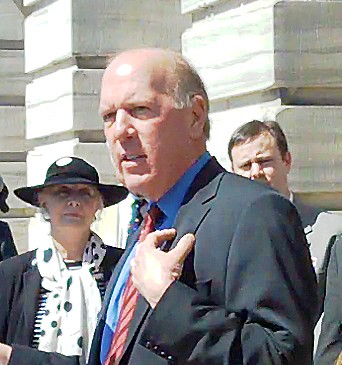Free is one of the biggest issues of our time.
Free makes it easier to do my job. But Free holds down my earnings and could cost me my job sooner or later. Free made this newspaper possible. Now Free is killing newspapers.
Free shouldn’t be taken lightly. Like marriage, early retirement, and poker tournaments, it should be entered into thoughtfully. You should probably get some counseling before you mess around with Free. Free can be a bitch.
Books have been written about Free. Economists and psychologists have studied Free to death. A Google search is free. Google’s founders say information should be free. They do not, however, work for free. Google is a $23 billion company.
Parents and kids have pondered Free and Not Free since the invention of the allowance.
So I sympathize with the Memphis Zoo, which learned the hidden costs of Free last week when all those kids showed up.
Admission to the zoo, normally $15 if you’re over 11, is free on Tuesday afternoons. Last Tuesday was sort of a Festival of Free. Spring break means free time. The weather was cloud-free. The thrill of being part of a crowd so big that cops and television crews came over to take a look was also free.
Free day is a tradition predating the Memphis Zoological Society’s 1994 contract with the city. It was originally on Saturday, then on Monday. Last week the zoo and the mayor made some changes including no free days during March and a requirement that kids 16 and under have a chaperone 21 or older. But this will put a burden on the zoo staff (“Let me see your IDs, who’s the chaperone, who’s with who?”), and it ignores the problem of neighborhood encroachment the other 11 months of the year.
Another idea might work. Make free day dollar day. Or, as a reader suggested, “TN Twos-day” for $2.
We value things differently when we have to pay for them, even a small amount. Chris Anderson, the editor of Wired magazine, wrote about this in his book Free: The Future of a Radical Price.
“It’s as if our brains were wired to raise a flag. … If you charge a price, any price, we are forced to ask ourselves if we really want to open our wallets. But if the price is zero, that flag never goes up and the decision just got easier.”
The students who came to the zoo on free day were making a rational economic choice. Free beats $15. Would they have come if the price was $1 or $2? Or would they have come to Overton Park and just hung out, which raises other issues?
My guess is that what economists call the “mental transaction costs” would keep a lot of people away. I bet most of those kids showed up last week to see the crowd, not the animals.
The zoo and other public facilities have a touchy problem on their hands when it comes to Free. Some of my neighbors in Midtown think the zoo should build a parking garage to handle the overflow of cars. But I think they’re overlooking the problem of Free. A parking garage would charge $5 or more and would not be hassle-free when crowded. A zoo spokesman says shuttles are being considered, but people shun them when there are alternatives. If you park on the streets, it’s close and free.
Concerts at the Levitt Shell in Overton Park are free, and the crowds are generally modest in size and demeanor. Maybe some evening there will be a flash mob of aging baby boomers and hippies. Wait, we already did that 40 years ago.
Free doesn’t work for some things. Musicians learn early on the perils of Free. Mud Island River Park went Free but still has a hard time drawing crowds. You couldn’t give away free tickets to University of Memphis football games or Memphis Redbirds games the last couple of years. You can’t give away magazines either, so publishers charge premium prices on newsstands and bargain prices for annual subscriptions, plus a free gift. You can give away newspapers like this one, because our advertisers pay good money. By putting this column on our website before putting it in the paper, I may be undercutting them. And bloggers and news aggregators may be undercutting me.
Free is hard. I wish the zoo luck.
 JB
JB